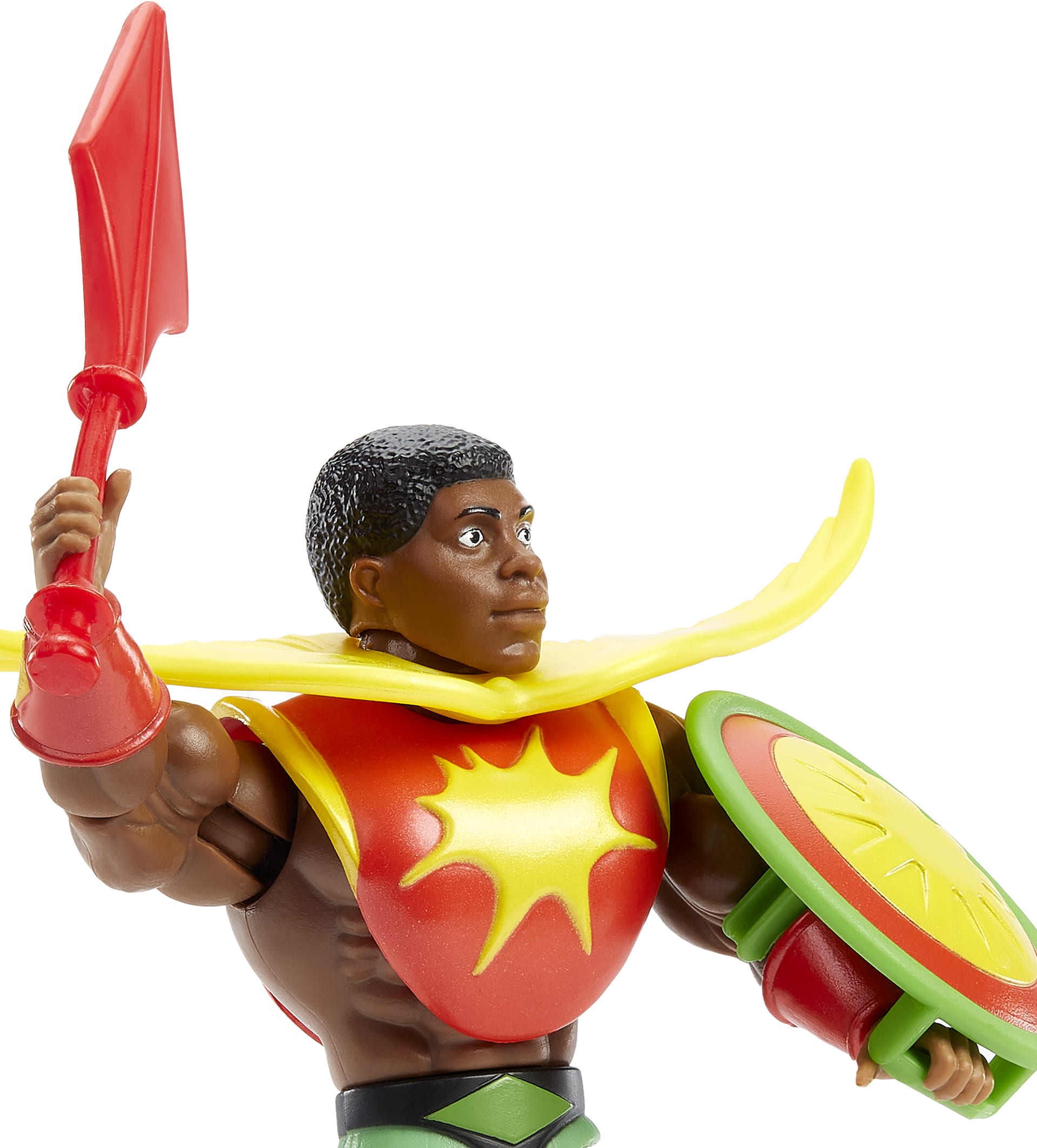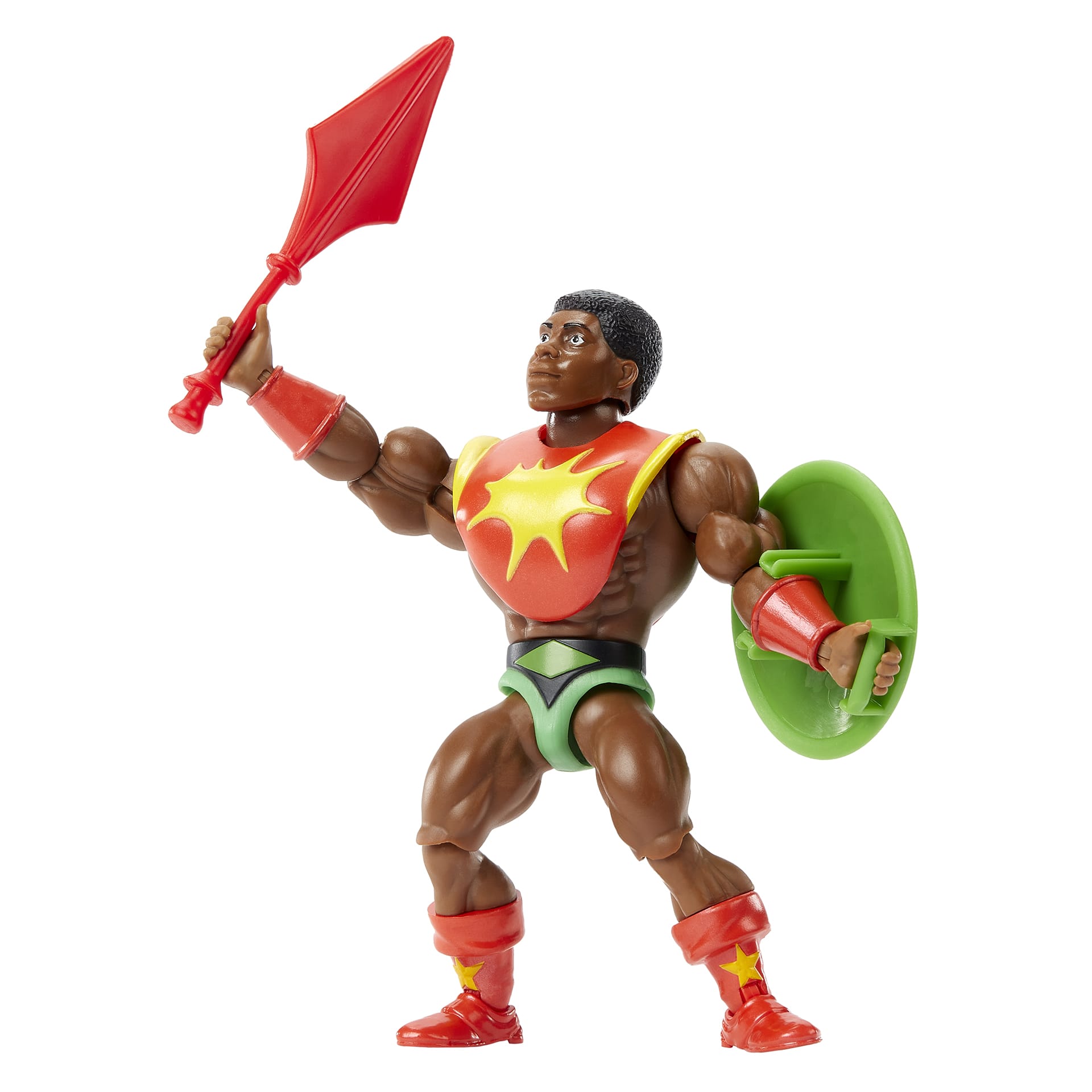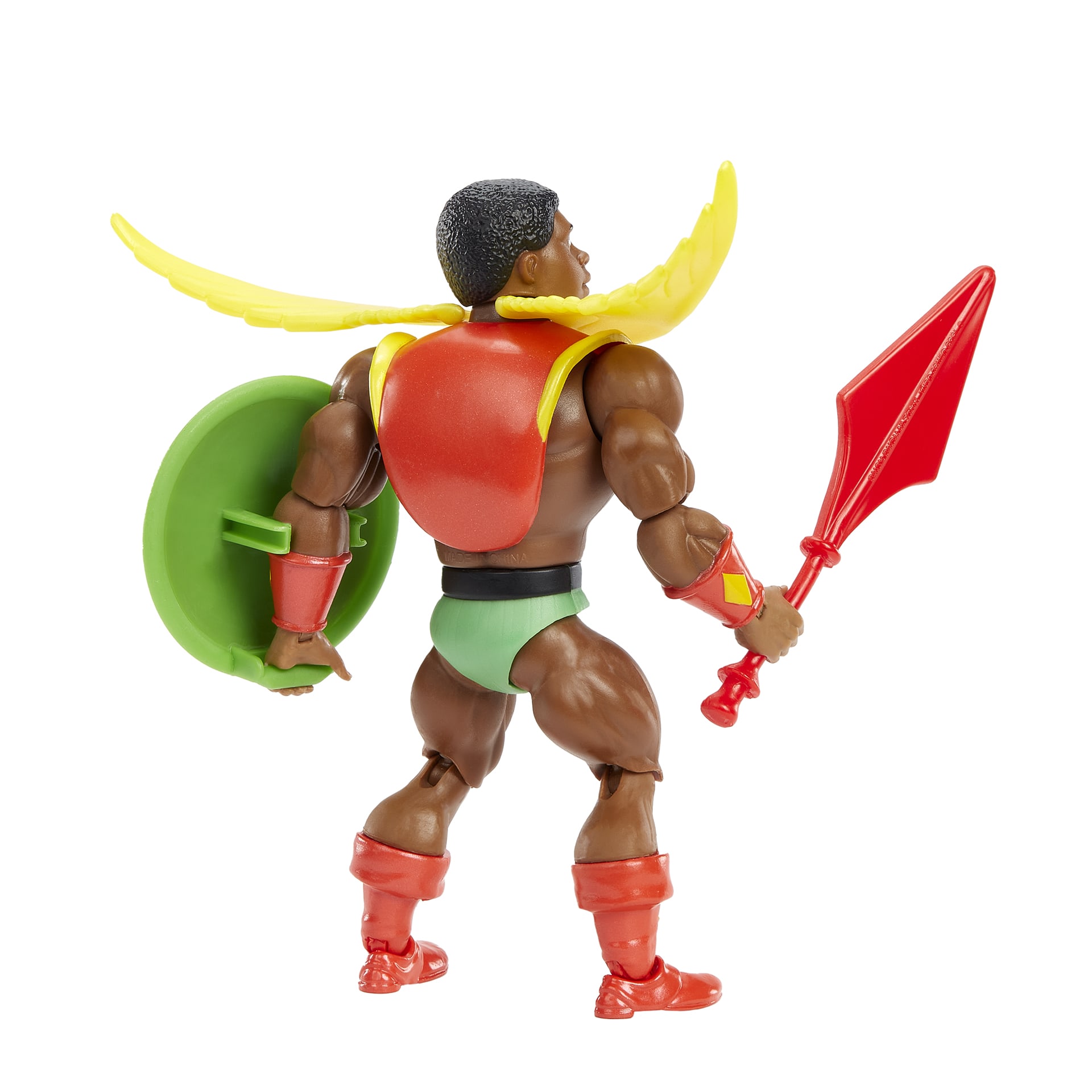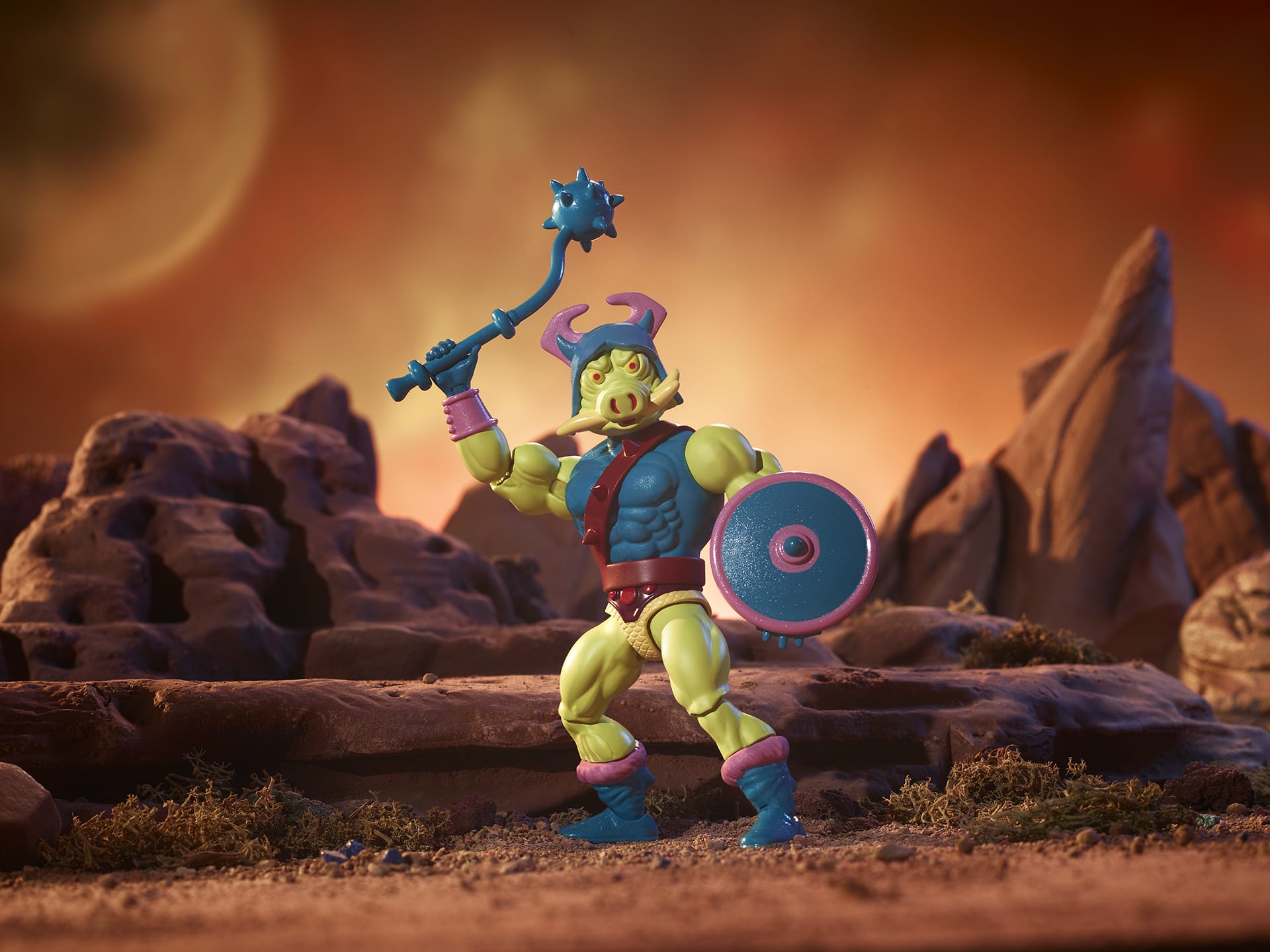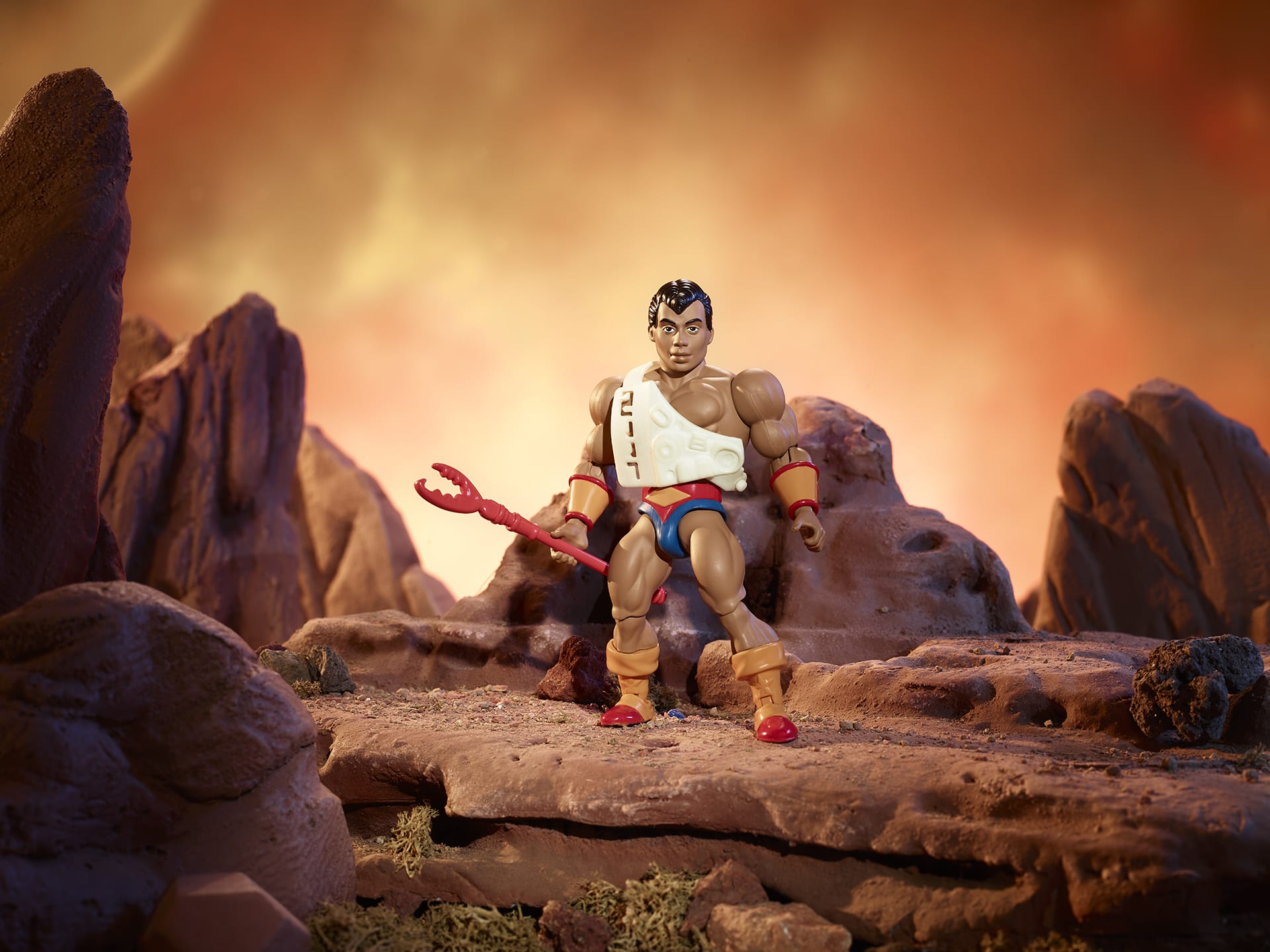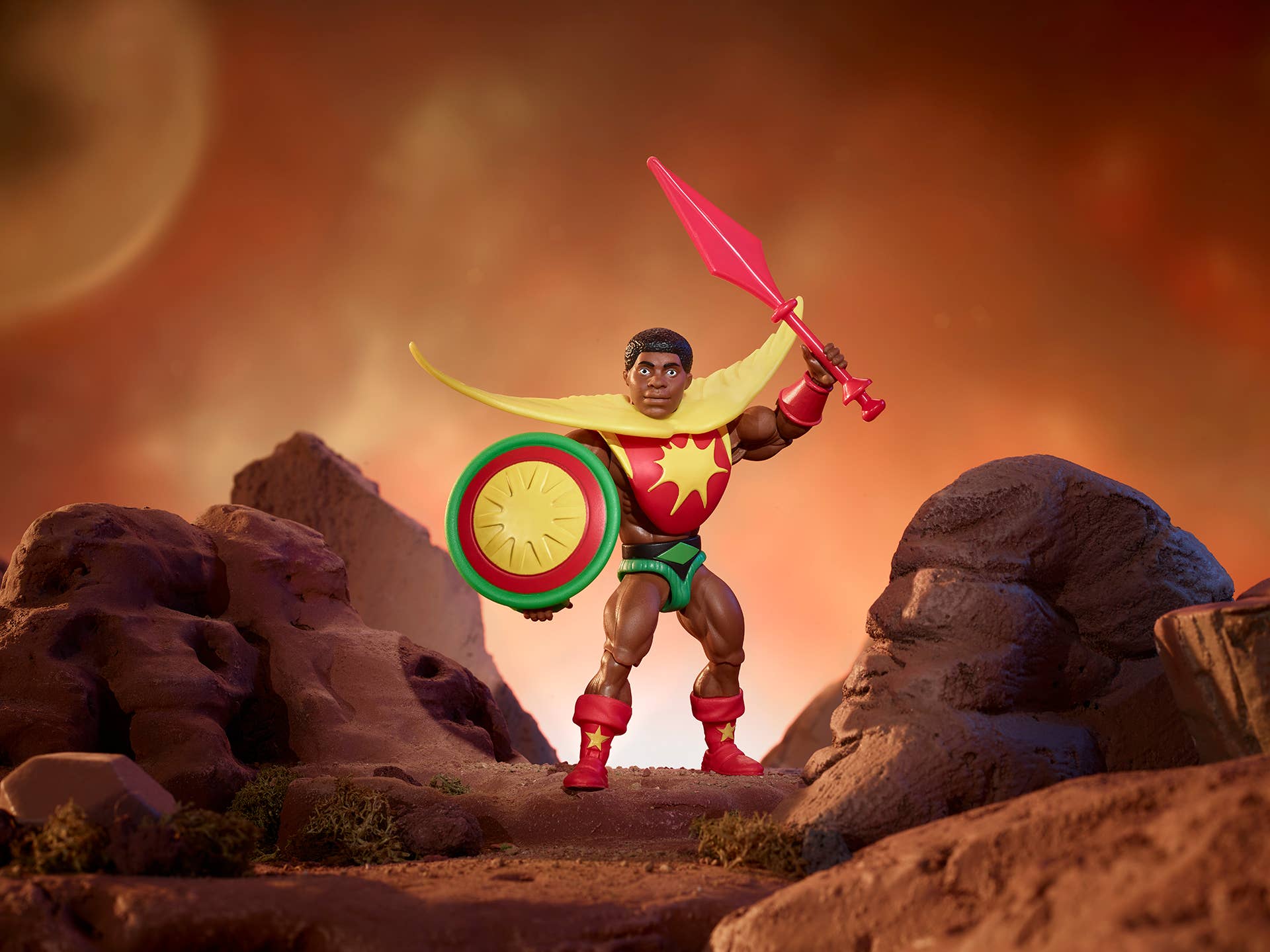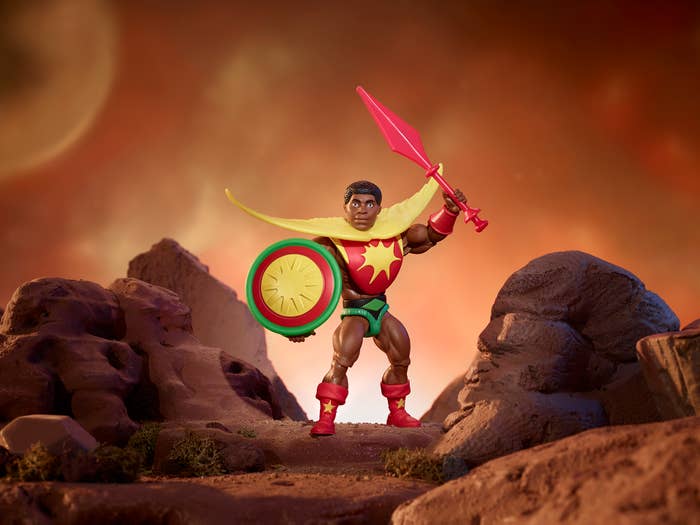
Growing up, I’d spend a lot of time in South Jersey with my cousin. My mom and I would drive about 40 minutes so she could run the streets with her sister, leaving my cousin and I to play video games, watch WWF tapes, and stage epic battles with our action figures. Many Saturdays, upon their return, my cousin and I would receive new figures to add to our collections—they may have been pro wrestlers, characters from the Marvel or DC Comics, or He-Man and the Masters of the Universe. We grew up with a few Black figures, but it wasn’t until my aunt walked in and handed us both these Sun-Man figures that the game felt like it changed. It’s not like this was the first time I’d seen a Black action figure before, but most of the time those were cheap knock-offs, not the beautiful Sun-Man figure, who came with his own backstory and a diverse group of allies known as the Rulers of the Sun. A Black action figure that harnessed the power of the sun and looked like one of my uncles, hanging out with a racially diverse group of do-gooders? Hands down one of my favorite toys, ever.
As I got older, and some of those memories came back, I went to the internet to find that Sun-Man wasn’t a myth; that toy actually got released, and has since gotten a second life with the internet, who discovered just how iconic Sun-Man was, but the story about how he got here is even more unique, as it was Yla Eason, a New Jersey mother with a master’s in Business from Harvard, who created Sun-Man. Why? Because back in 1985, her (then) three-year-old son wanted an action figure that looked like him. That, paired with her knowledge of how markets work, sparked the beginning of Olmec Toys, the toy manufacturer she created to produce Sun-Man, the Rulers of the Sun, as well as Black toys for girls, like the Naomi doll. It gives Sun-Man’s creation even more importance, as it shows what a determined Black mother can do.
In 2021, Mattel reached out to Eason to bring Sun-Man back as a part of their Mattel Creations series. The figure promptly sold out; if you hit eBay, you can find Sun-Man, but you’re going to have to pay. Or, you can wait, as today, Mattel announced that Sun-Man and the Rulers of the Sun are officially joining He-Man and the Masters of the Universe (which itself is celebrating its 40th anniversary), giving solo releases to Sun-Man, Digitino, and Space Sumo, as well as the evil Pig-Head, their nemesis.
With Sun-Man figures are set to hit shelves Q1 2022, but ahead of that release, Complex got to speak to Eason about getting Sun-Man made, the lasting impact of her work, and where the Rulers of the Sun can go next.

Do people still hit you up about what your work with Sun-Man and the Rulers of the Sun universe meant to kids growing?
I never knew I was ahead of my time; I was just a mom. I never knew that and for the last 37 years, I can tell you, when people find out… The other day, this guy has a store, Burger Walla, and he said, “Somebody just told me you’re the person who makes Sun-Man. Oh, that’s crazy. I had the toy as a kid,” I have been getting that for 37 years and it always warms my heart. I could tell you that it is staying alive.
I randomly remembered Sun-Man and I went online looking for it, and it was interesting to see that Sun-Man got a second life in terms of people discovering what you were doing, and maybe finding a new appreciation for it. It’s reaching different generations.
Right. I think the internet helped it. It’s the second life and among the collectors, the Masters of the Universe collectors, who started saying, “Wait a minute, did you know about this product?” Which many said, of all the products that were made to fit and to play with, was the one that they remembered being the most distinctive and also very well-made in terms of what it looked like and how well it was executed.
It’s the quality of the toy. It was also the backstory and the world that was built around it. Were you into comic books or science fiction? Or were you discovering that when you were creating Sun-Man?
To be honest, I had zero comic books throughout my life, and rarely even played with dolls. I grew up in Oklahoma with marbles, jump rope, climbing trees, softball. That was more of what I did as a kid. I never had an interest in it, and I never probably would have had my son not said he couldn’t be a superhero because he wasn’t white. I never even thought. I was just blindly buying toys, He-Man, because they were popular, but I wasn’t in the comic universe at all.
It’s almost a testament, the determination to make your child happy. I was wondering what was your son’s reaction when he first got to hold like a… I don’t know if he got to see like demos or if he got to see the fully-produced figure, but what was his reaction when he first got to hold Sun-Man?
Well, he did see stages of it, so he loved it, but I can tell you how I really knew he had a wonderful reaction was, I went to pick him up at the nursery school one day and all the kids swarmed me, squealing, yelling around my legs. And I was like, “What’s going on here?” And they said, “Menelik told us you can get us any toy we want.”
That’s hilarious. [Laughs]
That’s when I realized what it meant to him, because he was telling his friends about me and about the toy.
You must have been like Superwoman to him.
Yep. I think I won.
I was again doing research and seeing that you’re actually a professor and you still work at Rutgers, correct?
That’s correct.
So you obviously had the acumen and the skill for the industry, but I was wondering, what was it like actually getting out there, because you’re creating designs, you’re having to take them to places to help them understand what you’re trying to do. How difficult was that?
Well, I think the two things helped me. Prior to getting into my last job before starting the company, I was a financial editor, and before that, I had been a reporter. Tulsa Tribune, New Chicago Tribune, New York Times. So I had a background of research, curiosity, delving, and asking questions, and then couple that with, I had just gotten my master’s degree in business from Harvard. So I had an understanding of business and a concept that I could do anything in business I wanted to do as a result of that Harvard MBA experience. So that’s why it was not daunting for me to think, okay, I can start a toy company, although I knew nothing bout it. Did that answer the question for you?
Definitely. For a concept like this, where there weren’t any figures like this out there, you’re trying to get something done, but you’re also educating an industry in a way. I don’t know if that’s too hyperbolic.
Well, no, I was. I want to add one other thing is luck. As the universe would have it, the first lawyer I got had a toy client. That toy client was not making any products that were conflicted with mine or competed. He told me, “this is what you need to do. Here’s the factory in China.” So I got the steps from that person, which helped me. But if you were to ask me what was the biggest hurdle, it was the educating market. I said, “Okay, I’ve talked to other mothers, they were concerned about there not being any Black superhero toys and that their kids were obsessed with the whole He-Man character.” OK, that was one level. Then I wanted to understand what do toys need, so I had the honor and privilege of meeting with Dr. Kenneth Clark, who is with his wife, Mamie, [conducted] the Black doll study that led to the Brown v. Board of Education decision. He was the biggest researcher in Black dolls and Black kids in America at that time. I talked with him and he told me that children not seeing their image does affect their self-esteem and can perhaps limit what they can be in the future. So he encouraged me to go ahead and make the toys. So that was one part of it.
Back in ‘85, you could call up the United States Census Bureau, get someone on the phone who would answer any questions and help you with anything you wanted to do. So they were my research department and started walking me through research. So I said, “let’s look at all kids at the age of three,” back in 1985, and at that point, that was the big revelation. If you took America in ‘85, cut the line at three, looked at the ethnicity of the kids, you saw Black, Hispanic, and Asian kids were coming up to be equal in numbers to White kids, which said America’s browning up. That was what just the data saying to me. So then I looked at this toy as an industry. What kind of money is in this business? And I saw the billions in the toy industry. I said, “Okay, there is a market here. There is a need for it to form social reasons, psychological reason, and to meet a need, which marketing is always supposed to add value in some way.” And then I got to the retailer and that’s when all the doors slammed shut. I realized that I was giving them a concept that they didn’t want to understand. When I started giving demographic presentations, I remember one buyer yelling at the back of the room and there were only White buyers, and I think I told them in 2030, America’s going to be a majority minority and there will be more people of color than there are White people in America. And he yelled out, “I’m glad I’ll be dead by then.”
Wow! Wow.
So when you talk about education? Wow. I had no idea the resistance out there in the marketplace to this concept because they were only doing multicultural marketing, if you will, with darker pantyhose that match your skin, different hair products that worked with Black hair and darker makeup that worked with your skin, so a toy concept in this arena did not fit anything. They told me, “Black people don’t want black toys. They may want dolls, but they don’t want action figures. And what are you doing in this business? And if you really had a concept Mattel would’ve already done it.” So I just got total “get away, go away.”
And then of course you proved them all wrong and actually made not just made the toy, but made the toy line that actually mattered, but you mentioned Mattel. Let’s fast forward a bit. What were those initial conversations with Mattel like?
It was as organic as you and I talking. I got Ed Duncan, who heads up the boys’ toys and he has served several titles at Mattel. Long-standing person in the toy industry. Young guy reached out to me. It was that simple of an interaction. From that conversation, it grew into this partnership we have. It was really simple. So to speak, he said something similar what you just said to me earlier. “I’ve learned about you. I think what you did was wonderful back then. I know we didn’t have anything in this ethnic market and by the way, I’m African American.” I was like, “Wow. That’s interesting.” That’s how it all started. It was just, can I say very natural the way it grew?
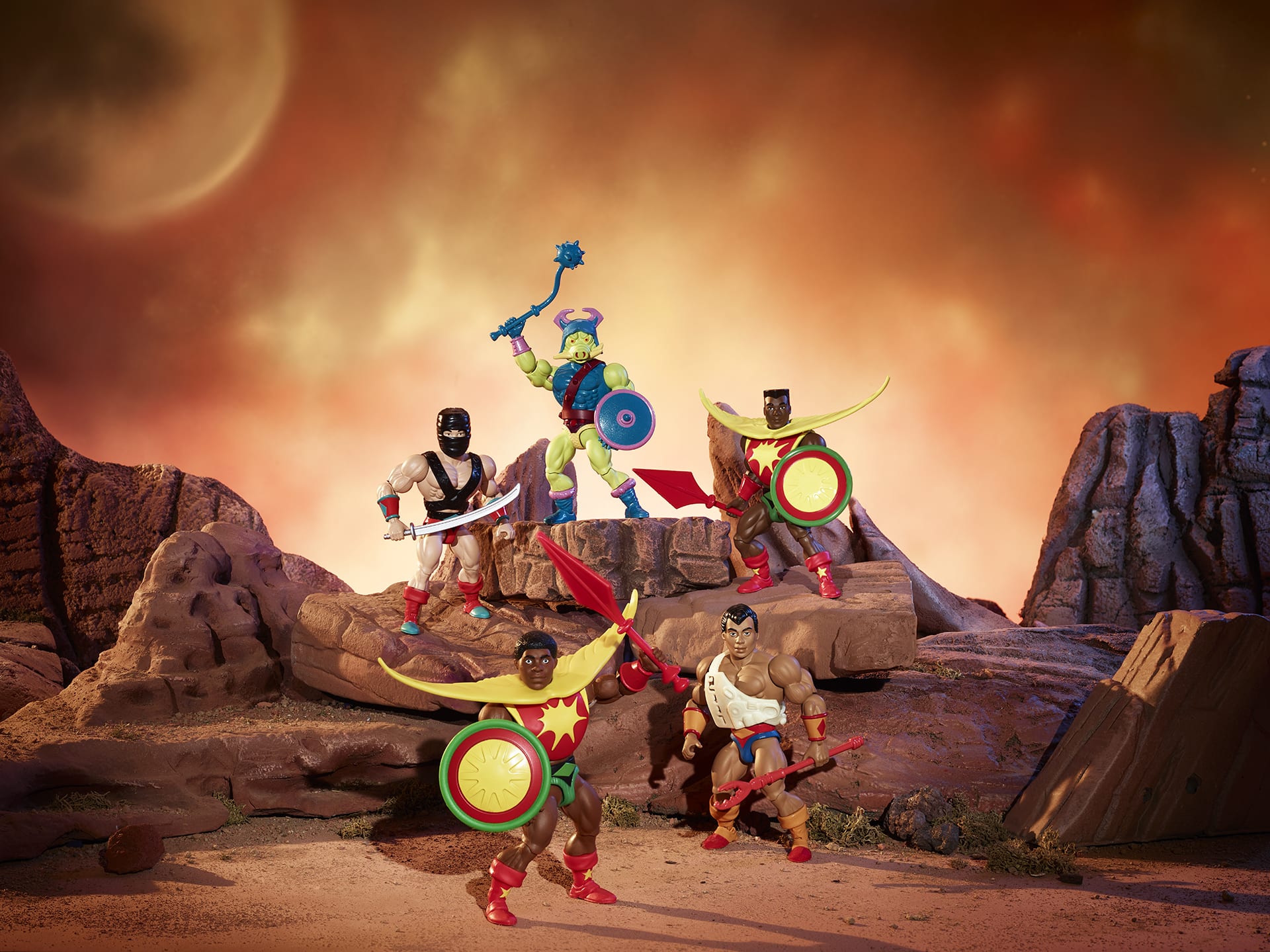
I missed the boat on the one figure that was available, but it’s cool to see that I guess we’re going to be seeing things hitting store shelves. I guess I’ll be able to go to Walmart and grab a Sun-Man when these finally start hitting. I saw the articulation on the first figure, they really wanted to pay homage to the original look while also modernizing it. Have you been involved in the modern Sun-Man creations?
Since it is my baby, and since this is a licensing agreement, the answer is yes. Every single step of the way. Every single. We’re partners in this, and it’s my child, if you will, so I have not turned it over to the worthwhile nanny that it is worth. I have been there with the nanny, if you will, the entire way, approving everything. It’s been a real partnership here and yes, I’ve been along every single step of the way. I have complete approval on everything, so. We talk weekly, sometimes several times a day, in fact. We’ve all got each other’s cell phone numbers. It’s a real partnership relationship here. It’s not hands-off at all.
I don’t know if this is an obvious question, but do you have a favorite character in the Sun-Man, Rulers of the Sun universe?
I have to say you’re not supposed to have a favorite child, but it has to be Sun-Man. Without Sun-Man sparking the growth of every other character in the line, there are no Rulers of the Sun. So yes, Sun-Man is my favorite character of them all.
I saw the internet going crazy for the announcement for the He-Man live-action movie on the way and I know that you’re toys, but with the Rulers of the Sun now part of the Masters of the Universe, are you excited to be able to see possibly see Sun-Man in a movie?
That would be wonderful. I am excited about any form or version that Sun-Man appears in any kind of platform, just because more people get exposed to him. So, yes, I’m very excited about everything related to Sun-Man.
Before we get out of here, I’ve been wondering: What’s your relationship with your son? It was great to see you guys have a moment about the history of Sun-Man and how things have come together now. Is he involved with Sun-Man now? Is he checking over designs? Is he looking over your shoulder? Is he in the Zoom calls? [Laughs]
He actually has a very serious career as a fashion photographer. In fact, he’s in California on a shoot now. So do I check with him? Of course I do. “What do you think about this here? What do you think about design?” He not only grew up with it, but he also has an eye. He’s a fashion photographer. So he understands visuals and design.
For more images of Sun-Man and the Rulers of the Sun, check them out below.


